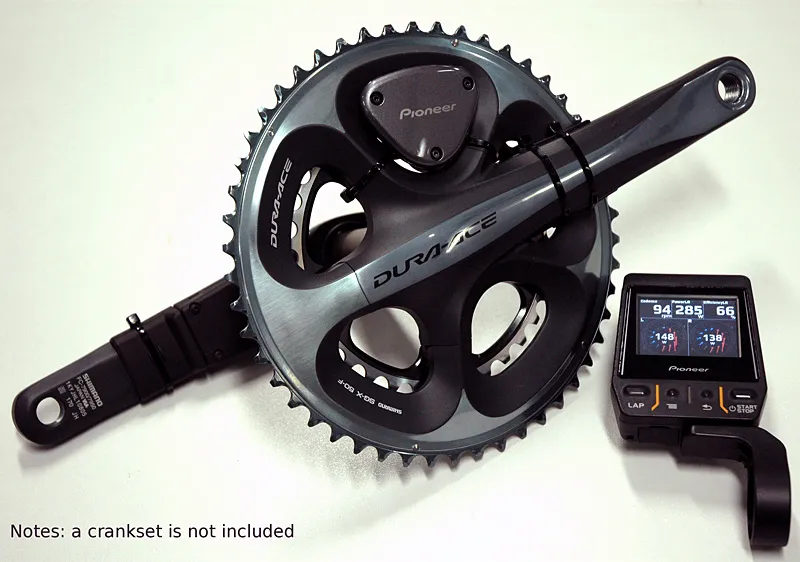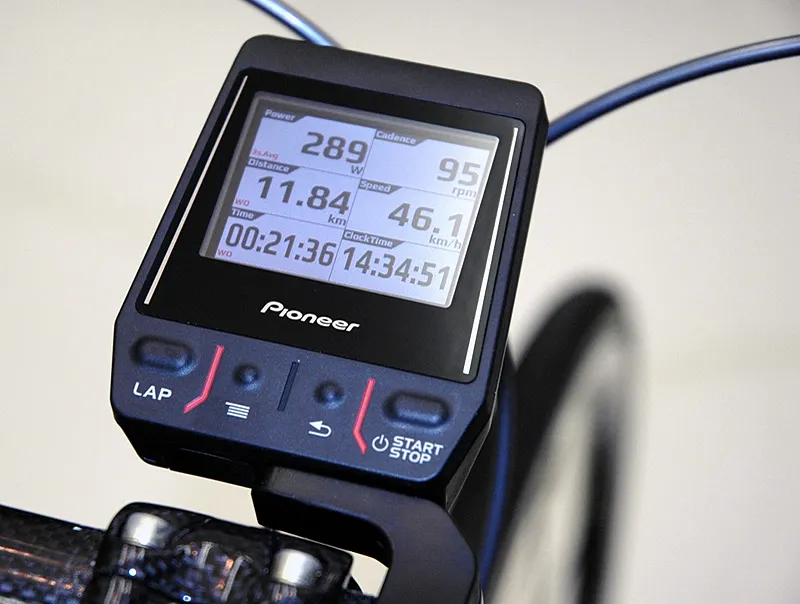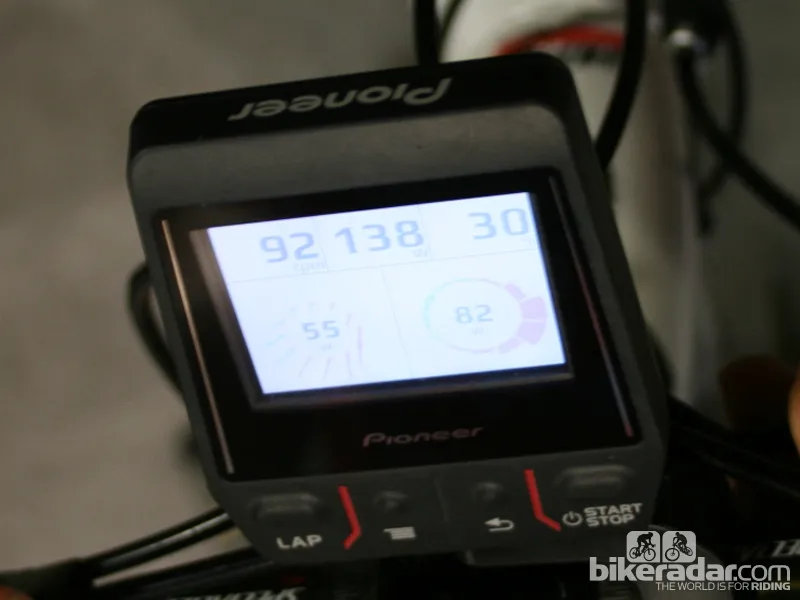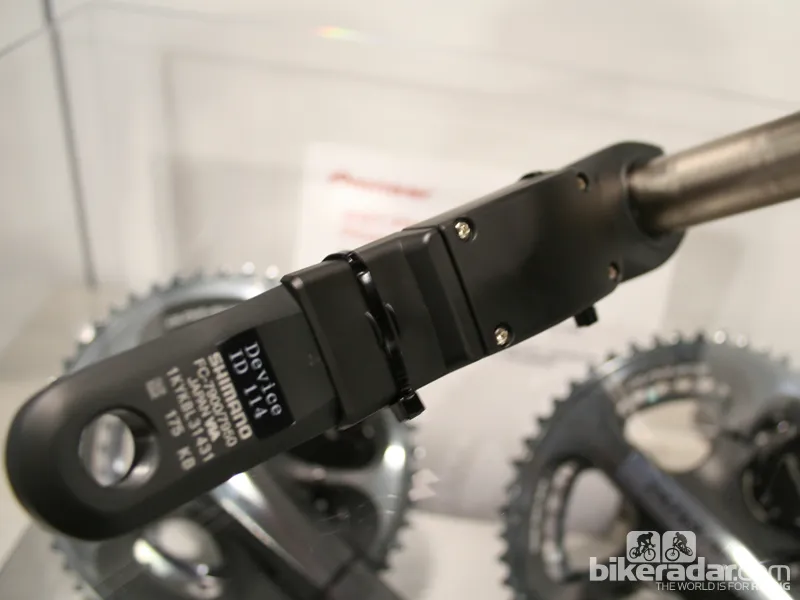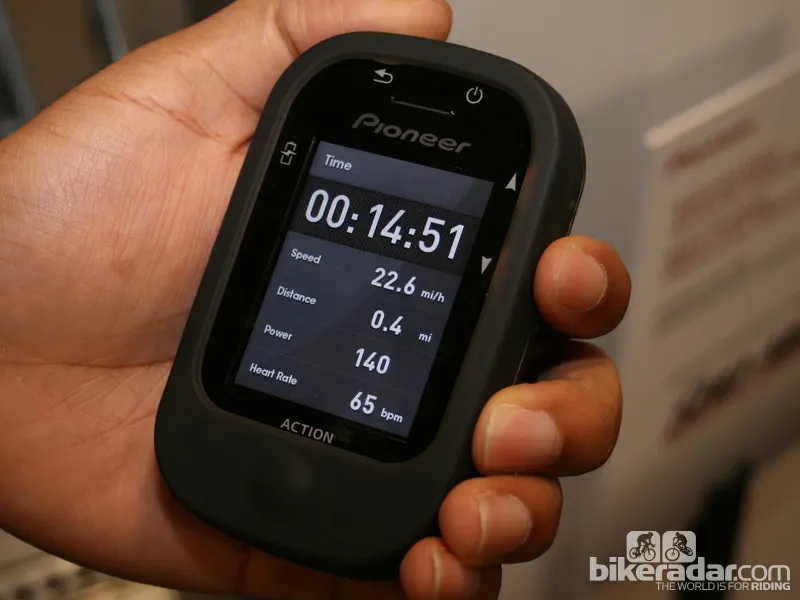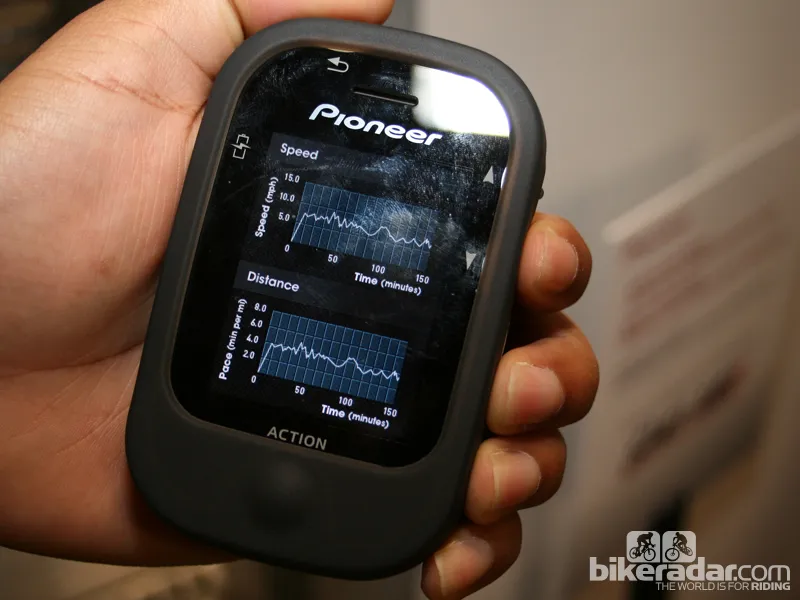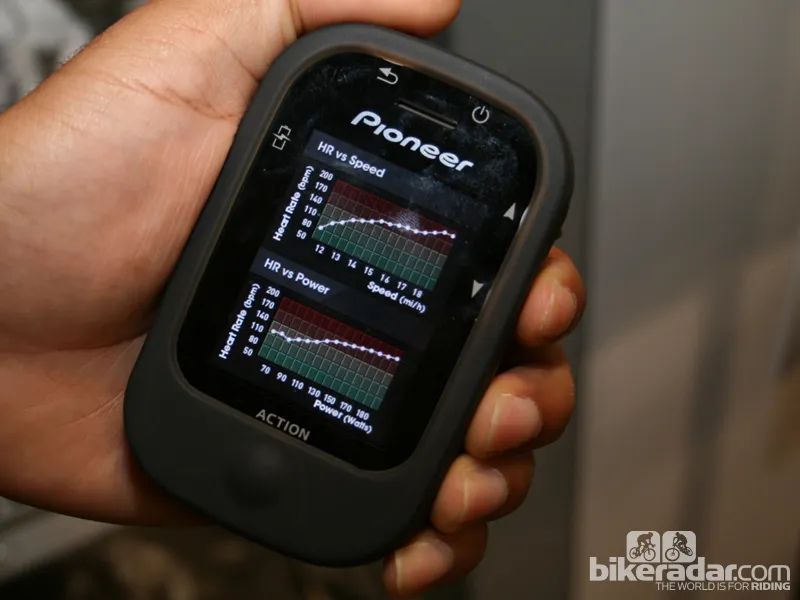Electronics giant Pioneer are set to release their new crank based power meter and head unit in the second quarter (April-June) of 2013. Dubbed the SGY-PM900 Pedaling Monitor Sensor and SGX-CA900 Athlete Cyclocomputer, its main selling point looks to be the ability to measure left/right pedal force, both in magnitude and direction. This means you can get a detailed analysis of when and where you're putting down the power during your stroke.
The power meter consists of two sensors that attach to each crank and an ANT transmitting unit that sits on the spider. Strain gauges in the sensors measure crank deflection every 30 degrees of your pedaling circle. That gets converted into torque and thus power. There's also a circular cadence magnet that attaches to the edge of the bottom bracket.
The sensors are water resistant (IPX6), take a CR2032 battery that's user replaceable, with a claimed life of 200 hours. Total weight of the sensors is 70g and claimed accuracy is /-2%, considered the industry standard for power meters.
As with most of these types of devices, the Pioneer Pedaling Monitor Sensor is ANT compatible so you can pair it with a head unit of your choice but Pioneer's Athlete Cyclocomputer (119g) will enable you to get the most benefits from the unit. It's an Android based, GPS enabled computer with a built in barometer and thermometer. It mounts on the front of your bike with an SRM-style forward mount, tucking it out of the way of the wind. It's USB rechargeable with a claimed battery life of 12 hours.
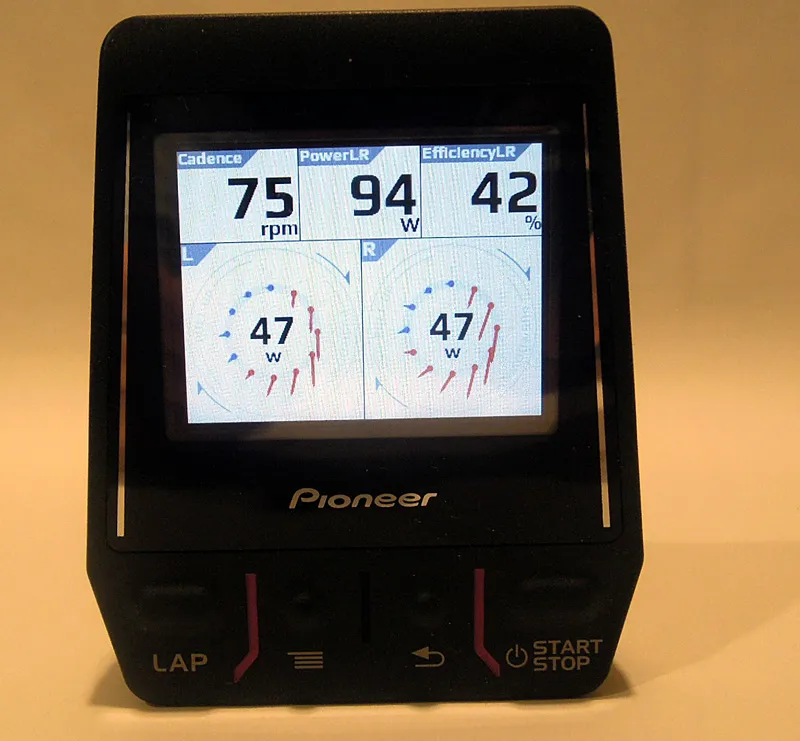
Observe your pedalling technique while you ride
The colour LCD touchscreen makes it easy to flick from screen to screen, and with six screens and up to nine fields per screen, you have a plethora of information at your fingertips. Besides all the usual metrics - speed, distance, time, power, cadence (measured, not derived) and so on - the most interesting is the visual display of your pedaling. This shows the direction of your pedal force, how efficient it is and where your so-called dead spots are. You can see this graphically or numerically. How useful this is remains to be seen, ie whether you can improve your total power output by improving your pedal technique. But with the technology to analyse it at your fingertips while riding, it's at least going to be possible to do easily yourself or afterwards via Pioneer's online service, cycle-sphere.com (not yet live).
At time of launch, the SGY-PM900 sensors are only available with Dura-Ace cranks (9000, 7950, and 7900) to fit BB30, PF30 and BB386 bottom brackets. We've no doubt that more options will be added if it proves a success.
Retail price has yet to be finalised, but Pioneer told BikeRadar at their Interbike booth that it will be between $2000-2500 for the sensors plus computer (both will be sold separately too). That doesn't include cranks or bottom bracket, so unless you have your own cranks you can likely add $700 to the price, putting this power meter into the realms of SRM as far as cost goes.
Also you can't just attach the power sensors to your own cranks either, as the strain gauges have to be glued on and carefully aligned and calibrated. This doesn't have to be done by Pioneer but it does have to be done by a mechanic trained in the art of this power meter's installation.
PotterNavi navigation computer
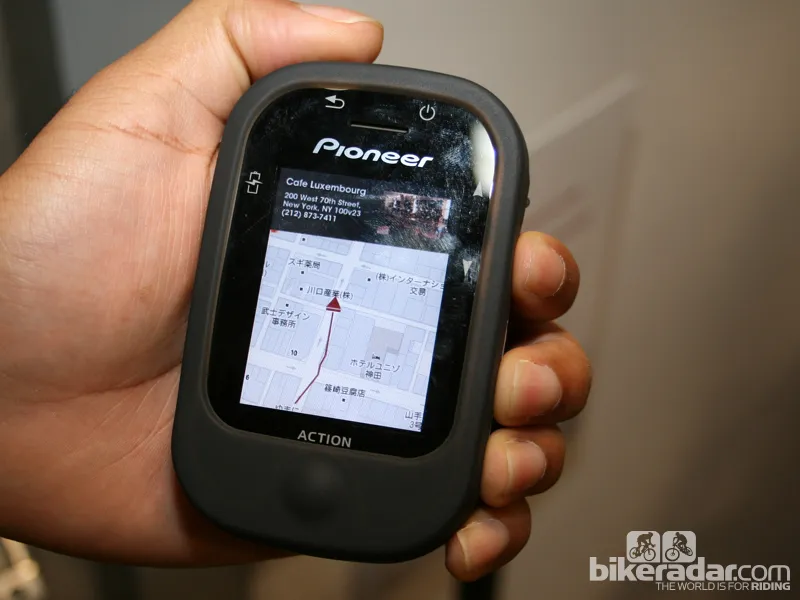
The PotterNavi
Pioneer were also showing their PotterNavi computer - a navigational tool aimed at casual cyclists and tourists. It uses 3G to stay connected to the internet, meaning you can easily navigate to nearby places of interest while "pottering around". It's also a colour LCD touchscreen for easy use on the bike.
It's currently only available in Japan but Pioneer hope to launch it in Europe sometime next year (vague pricing between €400-600), with the USA a possibility beyond that.
